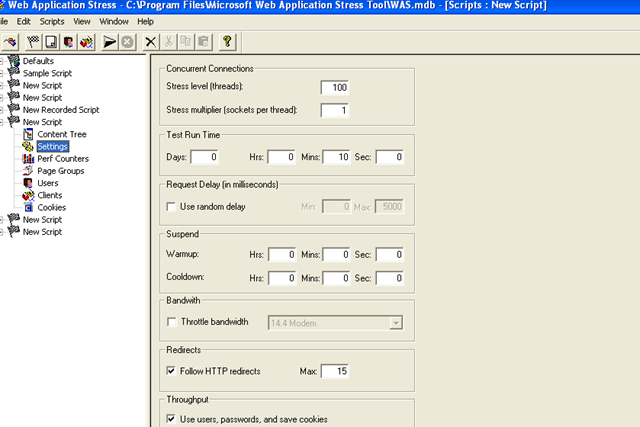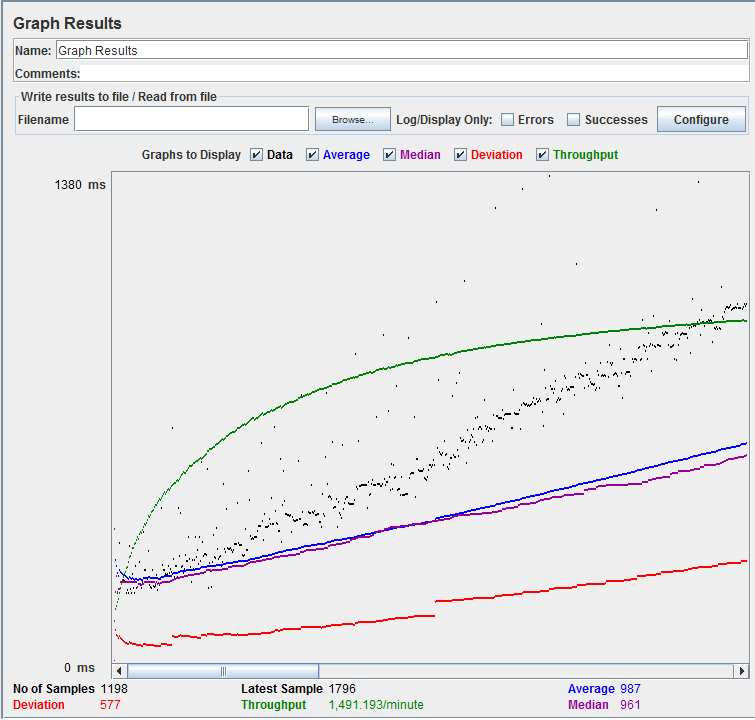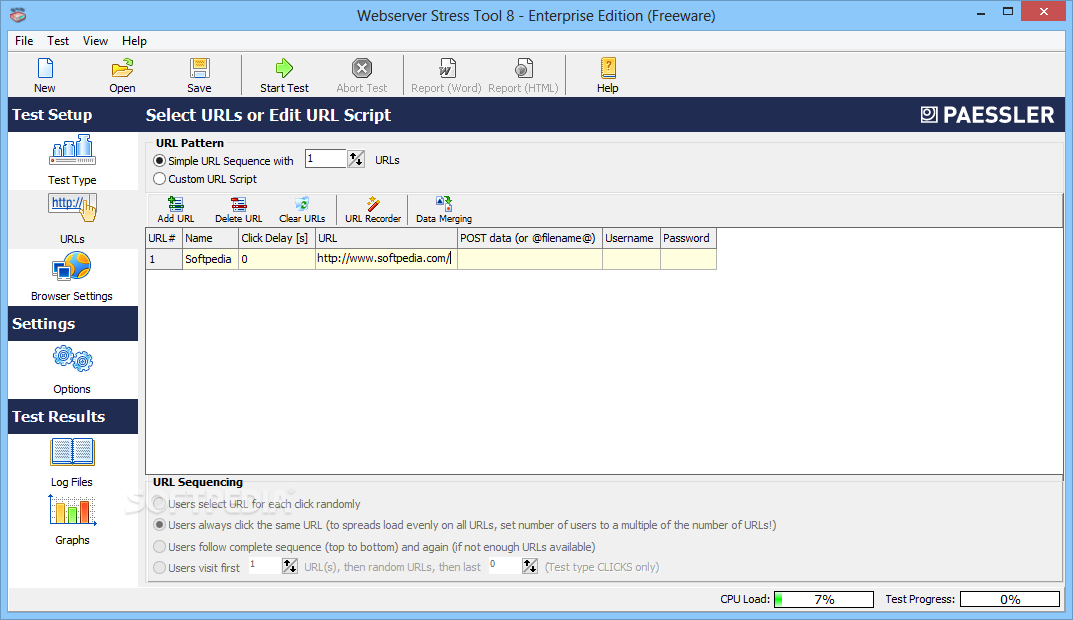- Webserver Stress Tool can be used for various tests Performance Testsare used to test each part of the webserver or the web application to discover what parts, if any, are slow and how you can make them faster.
- Webserver Stress Tool can be used for various tests Performance Testsare used to test each part of the webserver or the web application to discover what parts, if.
Load testing and stress testing are important to ensure a web app is performant and scalable. Their goals are different even though they often share similar tests. Load tests: Test whether the app can handle a specified load of users for a certain scenario while still satisfying the response goal. The app is run under normal conditions.
Our enterprise-class load testing platform offers flexible cloud-based testing for the most complex systems.

The Importance of Web Application Performance Testing
The performance of your web applications can affect your bottom line more than you think. With so many options for customers today, you may only get one opportunity to make that first good impression. A recent survey by Google analyzed 11 million mobile ads’ landing pages across 213 countries. The results revealed that if page load times take more than five seconds, the probability a user bouncing increases 90 percent. They also found that as the number of elements on a page, such as images, titles, and text, increases from 400 to 6,000, the probability of conversion drops 95 percent. If your application or site doesn’t meet your customers’ expectations, they will immediately try to find a faster, more efficient alternative, likely never to return. It’s as simple as that.
Load testing and stress testing are often confused as the same thing, but there are subtle differences between these two testing methods and their objectives. They both fall under the category of “non-functional testing”, meaning they are used to test how a web application or system operates versus testing functional requirements of the application. Where they differ is that a load test measures the performance of a system under an expected load, which could be defined as users or transactions. A stress test, on the other hand, involves overloading a system beyond normal operational load to find the breaking point.
The objective of load testing is to understand if your hardware and infrastructure can handle the expected user load. CPU and memory utilization, I/O reads, and network throughput are some of the key indicators that are monitored during the test. The results are used by infrastructure or architecture teams to establish baseline performance metrics and assist with capacity planning.
Stress Test Tool Web Applications
The object of stress tests is to identify the issues that only occur when the system is overloaded and whether the system can recover smoothly. For example, in the (hopefully, unlikely) event of a denial-of-service (DoS) attack, stress testing will give you an indication of how your system will respond and exposes any points of failure.
Load and stress testing your critical or customer-facing applications is essential to the success of your organization. The objective of each test is not to find bugs, but rather to identify and address bottlenecks before your application gets released into production. It’s a proactive approach to performance testing that should be undertaken early and often in the development process, but unfortunately, due to issues such as limited personnel or lack of proper load testing tools, it typically gets ignored. Proper web application performance testing is essential to maintaining a consistent and positive user experience (UX), enhancing brand loyalty, reducing risk, and increasing revenue.
Organizations need to understand that ignoring web application performance testing in pre-production could potentially put their business at risk once that application is in the hands of the users. Synchronization, memory leaks, and corruption are some of the issues that can result from simultaneous users accessing and modifying the same data, causing severe system defects – or even cause the application to lockup or crash. These types of issues are also the most difficult to reproduce, since they are typically caused by users, not internal development or testing teams.
A performance testing tool like Dotcom-Monitor’s Load/Stress Testing platform should be an integral part of continuous integration and continuous delivery (CI/CD) best practices, helping to detect issues earlier in the process and preventing minor application issues from becoming major ones. For example, you can browse the application monitoring tools list and you’ll find that the LoadView platform is the only browser-based performance testing tool able to truly automate load and stress tests for websites and applications. Using a global network of monitoring agent locations to generate synthetic user loads, allowing you to quickly and easily:
- Emulate real user actions
- Distribute traffic similar to real-world usage
- Measure response times under heavy load conditions
- Identify server capacity limits
- Test compatibility on over 40 desktop/mobile browsers and devices
- Test web API connection points
LoadView utilizes a global network of cloud servers, so it’s unnecessary to use an internal load generator. In addition to testing web applications, you can also test your infrastructure, such as connections, routers, firewalls, and switches that may be critical to supporting traffic to your site.
The LoadView platform is great for creating scalable load and stress test scenarios, generating HTTP/S requests or concurrent users. However, if you want to stress test real-user actions, such as browsing, searching, or adding products to a shopping cart, you’ll need to utilize the EveryStep Web Recorder.
The EveryStep Web Recorder makes recording test scripts effortless and straightforward. With support for over 40 desktop and mobile devices – everything from Chrome and Internet Explorer to iPhone, Google Nexus, and Samsung Galaxy – you can move and click through your site, mimicking real user behavior, and the EveryStep Web Recorder logs your every move.
The recordings can then be uploaded into the load/stress Test platform and replayed by a virtually unlimited number of simultaneous users. You also have the option to schedule scripts to run at set intervals and receive alerts if errors occur, so you have peace of mind that your site and applications are running properly.
Load Testing Tools for Web Apps: Java, PHP, .NET & More
Web Application Stress Tool
Today’s performance testing tools can easily perform GET/POST requests, but they lack the functionality to open, render, and run interactive media. With the growth of complex rich Internet applications (RIA) such as Angular, Ext JS, Flash, Silverlight, Java, HTML5, PHP, .NET Framework, AJAX, and Ruby, traditional performance testing approaches that exclusively analyze server performance, and not client-side performance, are no longer adequate.
To solve these challenges, a new approach is needed; one which can realistically measure performance all the way through to the client, in addition to providing scalability and flexibility that traditional hardware-based performance solutions do not provide. RIA technologies often include complex functionality and back-end business logic, making it difficult to test using a single-user approach, which is why it’s vital to use a tool like LoadView.
The load/stress test platform allows you to record actual interaction with RIA content in a real browser. With simple point and click scripting, you can walk through an RIA web application. Such powerful scripting allows you to verify that website is serving up the proper content and users are interacting effectively with your web pages. The scripts that you recorded with the EveryStep Web Recorder can be used to create load testing scenarios that simulate traffic from around the world.
For example, if you know what percentage of your users come from North and South America, and the rest come from Europe, you can easily configure zones to match what your current or expected user traffic looks like.
Anyone involved in creating, managing, and supporting web applications, regardless of the framework or scripting language used, should understand the importance of load testing. Knowing exactly how much your site or application can tolerate is critical when preparing for real-world user traffic, planning future updates, and improving the overall user experience.
Combining the EveryStep Web Recorder with the LoadView platform will help you automate the many tests involved in web application development and provide a comprehensive view of how your site or application performs under all load scenarios.
Experience unparalleled features with limitless scalability. No credit card, no contract.

The freeware stress test tool HeavyLoad was developed to bring your PC to its limits. It can be installed on any edition of Windows and client/server versions (32-bit and 64-bit) currently supported by Microsoft.
HeavyLoad puts your workstation or server PC under a heavy load and lets you test whether they will still run reliably.
Be mobile: Install HeavyLoad as a portable version e.g. on a USB stick and use it wherever needed!

Web Stress Test Tool

The main window offers a clean and modern user interface which allows to quickly start the application and to see the stress HeavyLoad puts on your PC.
In the „Options“ dialog you can configure the tool according to your requirements or set advanced settings such as time limit or used CPU cores.
The Windows Task Manager can be opened from within HeavyLoad via the Extras menu to quickly assess your system's performance.
5 Stars Rating:

Heavyload is a System Utilities Benchmarking software developed by JAM Software GmbH. To stress your PC or server, HeavyLoad writes a large test-file to the temp folder, it allocates physical and virtual memory, performs complex calculations and it draws patterns in its window.
ServerSentinel
No more server stress-out
Use sensors to automatically and continuously monitor CPU and memory usage. No longer worry about processor load limits!
